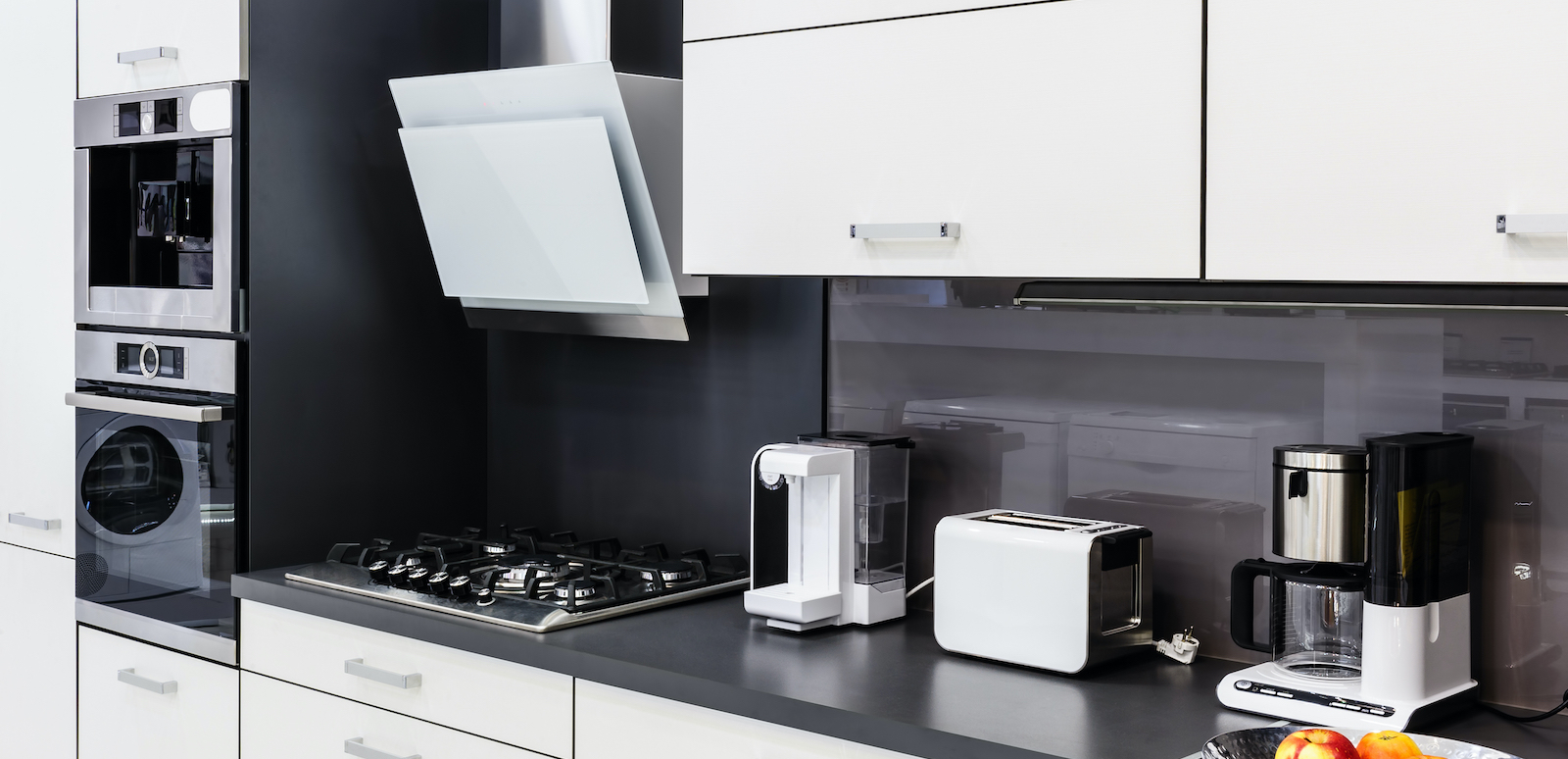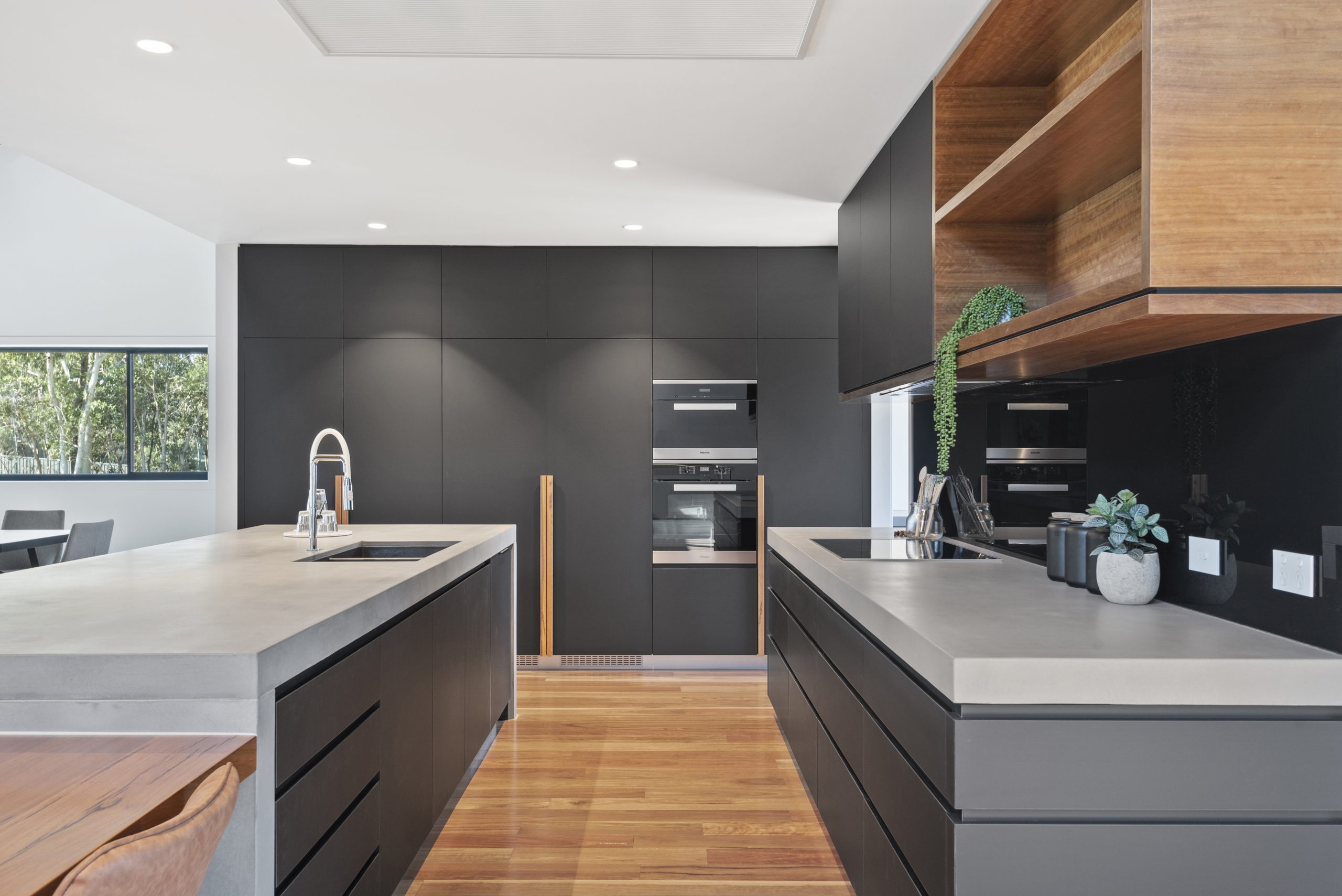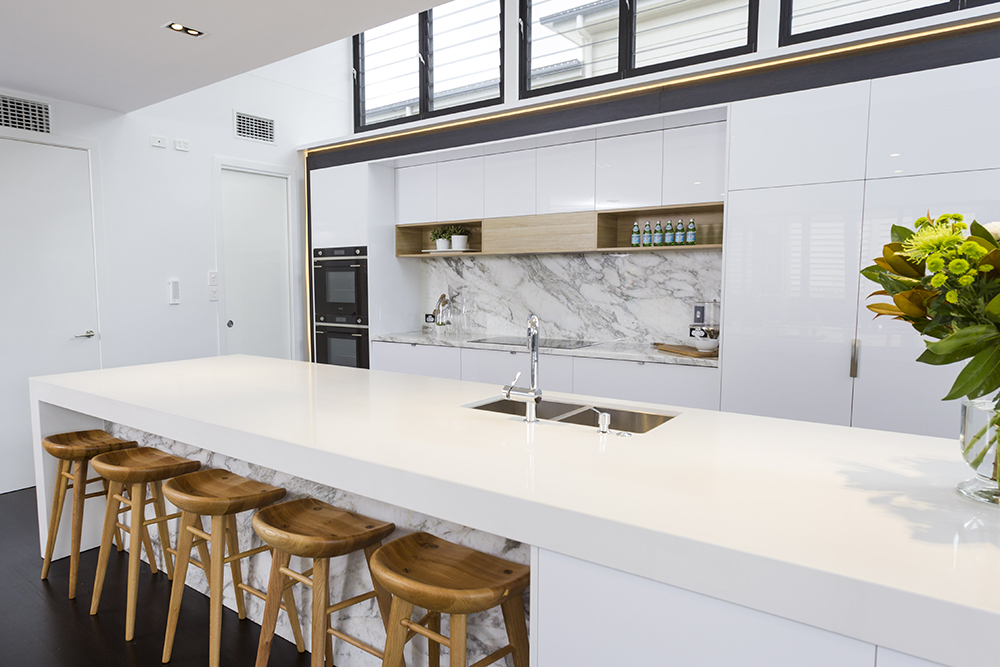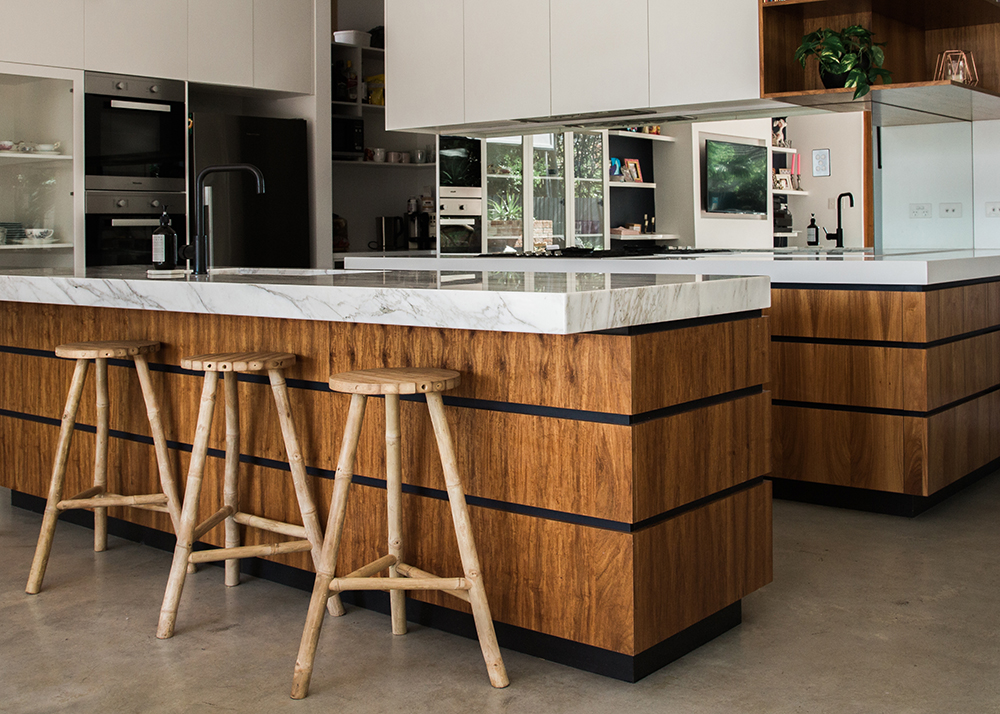The Crew Blog
Appliances. Where Do I Start?

As well as a fantastic layout with well appointed fittings, every kitchen needs to have a suite of appliances that are going to meet its owner’s needs.
These days there is a gadget for just about every culinary need, from electric apple peelers to grinders, juicers, blenders, right through to your cooktop, oven and microwave.
When deciding which appliances the kitchen needs, most people tend to start with the larger items, or the item they are going to use most.

The Oven:
For a large family the first appliance is usually the oven. These days, it’s quite popular and can be more economical electricity wise to have not one, but two ovens: a big oven along with a smaller one so there is a choice, depending on the meal you are cooking or for when you are entertaining.
When selecting an oven, think carefully how you’re going to use it. I don’t mean turning it on and off in the end, and the instructions kept in the manual. But in terms of what kinds of foods you’re going to cook and who’s going to use it.
A consideration is also the height within your kitchen that is going to work, as for elderly people a wall oven is often more suitable than a standard conventional oven to avoid any back injuries caused by bending over. Freestanding oven units come with a built in cooktop. Gas, electric and steam styles are available.
Smaller Appliances:
There is an enormous selection of appliances available. You will probably be very surprised at how many you may have. Remember, it is easier if these machines are stored in an easily accessible place, or permanently on the kitchen bench.
The Microwave:
Think carefully about the type of microwave to purchase. There’s a broad range depending on budget. The most important consideration is the size of the area the microwave will be situated.
There are two basic types. A straight microwave, and a combination microwave, that enables the cook to either bake, grill, or microwave.
The combination microwave, along with a small two burner cooktop has become very popular for smaller kitchens, granny flats and apartments, as a normal large oven is not necessary.
The Refrigerator:
There is a range of fridges, freezers, fridge freezer combinations, along with more expensive models that have ice making and instant cold water capabilities, with a tap connection.
Take care to choose the fridge that suits the dimensions of your fridge space. If building a new kitchen, try to choose the fridge while designing the kitchen, in order to ensure your chosen model will fit properly.
A simple way to tell if your cookware is compatible, is to place a magnet under the pot. If the magnet adheres to the pot, it will be suitable for an induction cooktop.

The Cooktop:
Once you have decided on the type and size of your oven, if it is not a freestanding model, you can decide whether a gas, ceramic, electric, or induction model better suits your style of cooking.
Gas: This style is a favourite in many households, and very popular for Asian style cooking, with some even having a designated wok burner. The temperature is easy to control, with an immediate response, with heat and temperature adjustment. These cooktops work with all pots and pans. It has an open flame for chargrilling for an authentic flavour. For an extra special look check out Pitt on display in our showroom.
Ceramic: These cooktops also work with all types of pots and pans, and are very easy to clean as the surface is flat ceramic.
Electric: These cooktops connect easily to your household power supply, work with all sized pots and pans, come in a variety of size for every kind of kitchen
Induction: When a pot or pan is placed on an induction cooktop, an electromagnetic current passes through a coil beneath the surface and heats only the pot or pan – not the cooktop itself. So it can heat a pan of water far quicker than gas, offer extremely accurate temperature control, from very high to very low, is safer for children as even if your cooktop is on, it doesn’t start heating up your cookware until you’ve placed it on the element.
The surface around the cooking area doesn’t heat up, preventing baked-on spills and making the cooktop quick and easy to clean. Only cookware made from magnetic materials, such as magnetic stainless steel and cast iron can be used on induction cooktops.
A butler’s pantry would of course be ideal, but not everyone has the space for one, or can afford one. The following is a quick list of most of the other kitchen appliances.
For beverages:
Coffee machine, coffee grinder, milk frother, kettle, water filter
For cooking:
Air fryer, sandwich press, deep fryer, rice cooker, slow cooker, electric frypan, toaster, grill plate, waffle maker, egg cooker, popcorn maker
For food preparation:
Mini chopper, stick mixer, blender, bench mixer, hand mixer, food processor, vacuum pack sealer, juicer, food steamer, dehydrator, electric knife, ice cream machine
So make a list of the smaller appliances you have, where you would prefer to store them, and a wish list of ‘nice to have’ appliances too. No doubt you will buy new machines every now and then.

